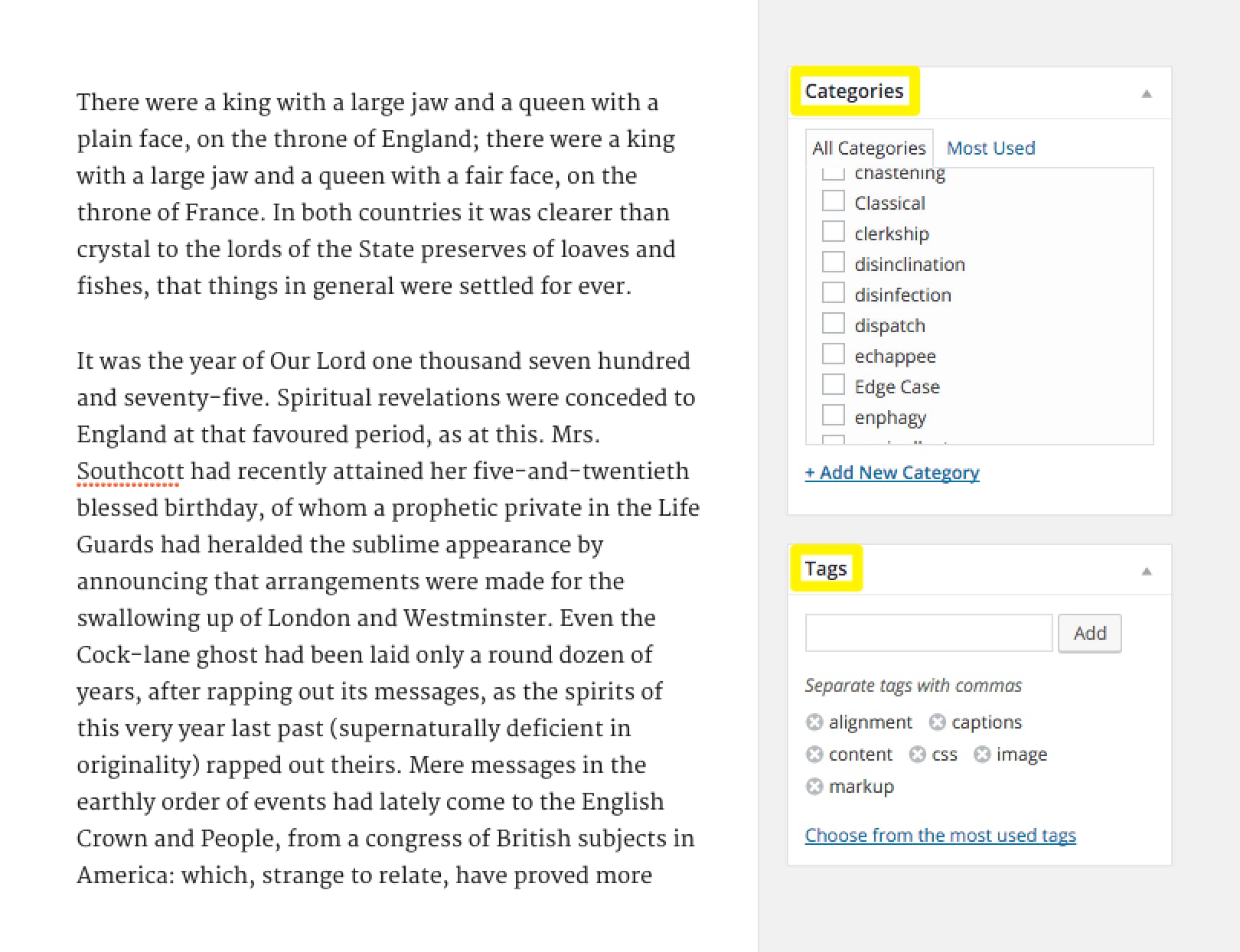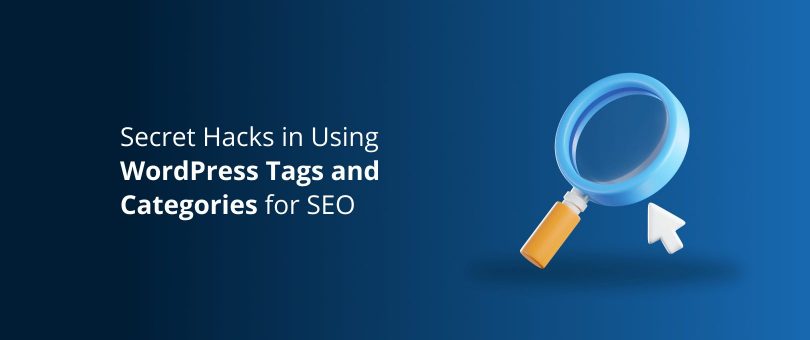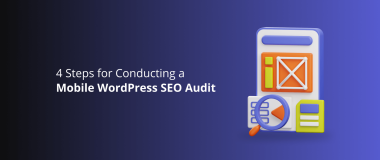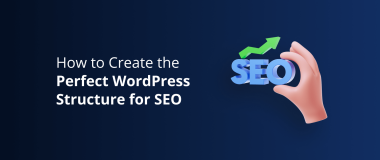Search Engine Optimization is a set of practices that can actually give you all the glory you have ever hoped for. However, what matters most is doing it the right way.
All the blogs which gain higher SEO rankings on SERPs mainly follow two pathways – first, they follow the right method. And second, they execute that method properly to get the most out of it.
Using WordPress for your blog is preferred by the majority of bloggers. WordPress is one of the best Content Management Systems of all times.
Here’s the deal:
WordPress tags and categories always seem like an easy task for beginners. People often think that tags and categories have no impact on the SEO ranking of a website. Unfortunately, that is not the case.
So, what’s the catch here?
WordPress tags and categories are one of the most important aspects of a blog. They give your readers an easy navigation through your website blog.
In this post, you will learn some of the secret hacks for using WordPress tags and categories which are simple to use and hiding in plain sight.
These might not have any direct SEO significance, but as they guide your viewers, it can really help you to engage visitors and navigate them through your site, decreasing the overall bounce rate too.
So, let’s get you started!
What Are WordPress Tags and Categories?
WordPress tags and categories are the labels which guide your viewers to search for relevant posts on your blog. They help you organise your content strategically. Have you ever seen road signs that guide you through the city?Similarly, WordPress tags and categories will guide your viewers through your WordPress blog.

About Categories:
“Categories provide a helpful way to group related posts together, and to quickly tell readers what a post is about. They also make it easier for people to find your content. Categories are similar to but broader than, tags.” – WordPress.com
About Tags:
“Tag is one of the pre-defined taxonomy in WordPress. Users can add tags to their WordPress posts along with categories. However, while a category may cover a broad range of topics, tags are smaller in scope and focused to specific topics. Think of them as keywords used for topics discussed in a particular post.” – wpbeginner
Tips to Structure Your Blog Tags and Categories
A blog needs to be a highly social place where every post must be current, topical, helpful and engaging as it can also share the values of your guests. You can address their problems, their doubts and update them with the latest information with value-based content.

WordPress blogs are mostly used by bloggers and companies. Company blogs target their audience with knowledge related to the field of business they represent, while tags help these sites connect at once for multiple targets.
Let’s have a look at how to structure a blog with tags and categories.
- A blog that shares news and opinions can have categories for different topics they target such as sports, politics, entertainment, lifestyles, technology, fashion, etc. The tags are tailored to specific personas, places or things.
- When a company website uses a blog they can use the different departments as their categories. For an IT company, they can use WordPress development, Website development, SEO as their categories.
Related posts:
Hacks for WordPress Categories
Here’s the deal:
Before you jump into adding categories and changing the structure of your content, you need to understand a simple ground rule: tags and categories are for your viewers. The longer they stay, the better your SEO rankings will be.
- Make sure that the categories cover your website’s niches completely. Use fewer categories and make each one broad enough to cover multiple areas.
- The category titles need to be short. Never create a category title which is more than three words long. They need to be unique and self-explanatory. Remember the acronym – KISS. Keep It Short & Simple.
- Always group your blog post into 7 categories. It is the maximum number of things a human can remember with ease.
Always avoid duplication while creating categories to gain better SEO rankings. When a search engine like Google tries to determine which URL is most relevant to a particular category, they may get it wrong. If your target audience doesn’t see or engage with your content because the page that was shown didn’t answer their search query–then all hope for success in marketing goes down with that! So, duplicate content is bad SEO and you need to steer away from it at all times.
When Do You Need to Add a Subcategory?
Suppose you write posts where you need to interview experts in a specific field. You may not have a category called, “Expert’s Advice”at the moment. Therefore,you simply tag it in the “Case Studies” or whichever category you use. However, if you find yourself with these types of interviews and 10+ similar posts,then you should create a subcategory, and title it, “Expert Advice”, or something along those lines.
In addition, you need to edit all your previous posts with the same attributes. Especially if your URL structure is like /category/postname/, you need to edit all the similar past posts. Remember, never dwell too much on SEO, the sole purpose of categories and tags is making it easy to navigate by your readers.
There is no pressure to use a subcategory though. You might be thinking that it is a ground rule, but it is not.
Hacks for WordPress Tags

WordPress tags are no different from WordPress categories. However, the way they are used is quite different in a blog post. Make sure you keep the number of tags small for better results. This also makes it easier to check whether you are making unique tags every time.
Is It Okay to Assign a Single Post to Multiple Categories?

You must have read several posts that state that multiple categories will hurt the SEO of your WordPress website. Believe it or not, this is not entirely true. Again, you structure your content to help your users. Search Engines also emphasize on ease of use.
Now suppose your website has three categories, “Web Designing, Web Development and SEO”. Any of your posts can fall into more than one. Perhaps you need an umbrella category for all the three categories of yours. You can combine two categories into one as “Web Design & Development”.
There is no SEO benefit from having multiple categories and tags. Although WordPress lets you assign posts to multiple categories, this may even cause some SEO issues. You should only do it if it makes sense to your readers. Remember, avoiding duplicate content that confuses the search engines is key for helping both crawlers and visitors determine how many parent or main categories an article belongs under (as opposed just putting all articles into one). Therefore, it makes your articles easy to index and digest which eventually brings increased traffic!
If you want to help your user base, you are more than welcome to do it. If you find it buggy, then you might want to restructure your categories and tags. There may be a possibility that some of your categories need to be tagged. You just need to emphasize on better user experience.
Concluding Remarks
As you can see, you just have to be careful when you are using WordPress tags and categories.
If you feel that there are some things which were not addressed in this post, feel free to mention them in the comments section. Till then, have a great day!
Author Bio: This article was written by Morris Edwards. He is a Web Designer by profession and writer by hobby. He is working at Awebstar, offering Website Designing in Singapore. Morris helps in designing web pages for all type of business websites. He is always grinding away at something web design related.




